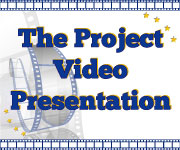basic information
THE INITIATIVE PROMOTER’S PERSPECTIVE
The deaf or hearing impaired students presented during their schooling special educational needs that should be taken into account to avoid a difficulties in learning such important areas as communication, language, socialization and cognitive processes. All this, added to the difficulties of access to information, negative impact on academic progress and significantly limits the overall development of deaf children.
The educational intervention and speech therapy implementation so far, despite the various initiatives and efforts, has failed to overcome these drawbacks and totally deaf children continued to face difficulties of access to quality education on an equal conditions than the rest.
El Mon del Signes aims to achieve the following objectives among deaf students:
1. Encourage the teaching-learning process of deaf children by supporting specialized resources.
2. Disseminate and promote the use of the Valencian language between deaf students through the possibilities that new technologies offer visual training tailored to their educational needs and their communication characteristics.
3. Optimize training of deaf children in education of Valencian towards the quality of their linguistic and educational development.
4. Bringing the culture and ethos of the Valencia to deaf students.
5. Promote understanding and assimilation of the basic curriculum required in the teaching-learning process of Valencian.
Deaf people have access to the reality around them through the visual channel, and their world view and the environment they live far largely the vision of hearing people.
Based on this conception of reality, the methodology used to perform the material and to achieve the objectives, has pursued educational needs, communication and language of deaf people. This communicative methodology, based on visual tools and resources, benefits the teaching-learning process of the students independently.
Multimedia resources are an essential tool for the training of the deaf. The sign language videos, real-time visualization of the dynamic language and explanations are characteristics that include this technique. Therefore, the material is designed for deaf students can learn, expand and improve the content and own the most relevant features of the learning process of Valencian using visual information media and through written texts and unsigned.
After analyzing the results obtained in the different material validation processes dels signes The sermon, we emphasize that the objectives were successfully met initially. Therefore, we can state that EL MON DELS SIGNES is a useful material and valid for deaf people know our territory and learn our language and our culture.
Because we thought it was a good and new material to show that deaf people can learn other languages.
We have disseminated our project among schools all around Spain and also among deaf federations. We have participated in meetings sharing our experience about “EL MON DEL SIGNES”
We published all the project’s content in our website http://www.fesord.org/index.php?option=com_content&view=article&id=152&Itemid=56&lang=es
Right now we are trying to change our project into scroll so we can share it into a e-learning platform of Valencian Government.
ELL gave a very good prestige to our material and also to our sign language courses in general.
THE NELLIP NETWORK’S PERSPECTIVE
The NELLIP Network selected the The World of The Signs project for its consistency with the political priorities of the European Commission in the field of language learning. In particular, “The World of The Signs” project promotes multilingualism, and language learning for specific purposes, being addressed to a specific target audience (deaf people) with the attempt to develop its linguistic skills.
Comments on this Case Studies
Date: 2014.10.21
Posted by Cornelia (Romania)
Message: Learners with special needs are a very specific category of students who need very specialised teaching / learning materials which are not always provided in schools. It is a good ideea to design such material through European Projects. This material should be transferable to other countries and made available free of charge.
